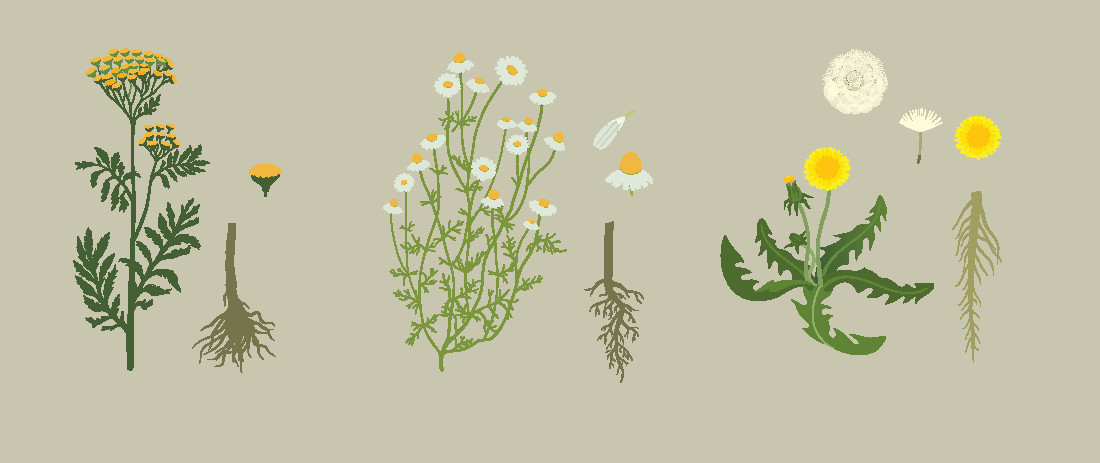DR DES CORRIGAN LOOKS AT THE CLAIMS MADE FOR TREATING NAFLD WITH HERBAL REMEDIES
I have written previously about a ‘popup’ ad for a herbal product for arthritis that appears on my smartphone.
Accessing that ad to establish what ‘plants’ were included led inevitably to further ads appearing, including one
describing a treatment for non-alcoholic fatty liver disease (NAFLD).
NAFLD is an umbrella term for a range of liver disorders in people who drink little or no alcohol. Its main characteristic is storage of excess fat in liver cells. It can lead to non-alcoholic steatohepatitis (NASH), an aggressive form, not unlike the damage done by heavy drinking, capable of progressing to cirrhosis and liver failure.
NAFLD is usually asymptomatic but can present as fatigue and pain or discomfort in the upper-right abdomen. It is linked to being overweight or obese, to insulin resistance, hyperglycaemia suggestive of type 2 diabetes and to hyperlipidaemia. According to a recent overview in JAMA, it is one of the most commonly encountered liver diseases worldwide, affecting approximately 25 per cent of the population in the US. About 4 per cent go on to develop cirrhosis, but a subset of patients with NASH liver disease are more likely to do so.
Indeed, it is expected that within a few years, NASH will overtake alcoholic liver disease as the leading indication for transplantation. In response, much emphasis is placed on prevention through intensive lifestyle changes involving diets rich in vegetables, whole grains and fruit linked to exercise to promote weight loss. The ad I referred to earlier is for a product containing three plants with a reputation for affecting the liver and two chemical
compounds. The components are N-acetyl cysteine, choline bitartrate, dandelion root, artichoke leaves and milk thistle.
The best-known component is clearly N-acetyl cysteine because as a glutathione precursor, it helps replenish hepatic glutathione stores and as such, it is recognised as a ‘hallmark’ treatment of paracetamolinduced acute liver damage when given within eight hours of the ingestion of the analgesic. Whether it has any benefit in
NAFLD and NASH requires clinical study, even though it has been investigated for its mucolytic effect in COPD and for its neuroprotective activity in Parkinson’s, Alzheimer’s, neuropathic pain, stroke and conditions as diverse as autism, depression, anxiety, ADHD, OCD and addiction to cocaine and cannabis, to name but a few.
Choline is also a well-known compound because of its link to acetylcholine. It comes from both endogenous synthesis and from the diet. Choline deficiency rapidly leads to liver damage linked to lower levels of
phosphatidylcholine that in turn results in an accumulation of triglycerides and a fatty liver. Prolonged inadequate intake of choline may predispose individuals to NAFLD, so it makes sense to include it as a supplement in any intervention.
Of the herbal materials, dandelion (taraxacum) is undoubtedly the best known, even if its traditional reputation as
a diuretic was trashed by the EMA’s Assessment Report that concluded that there was little evidence of a diuretic effect in rats and mice. There are two indication claims accepted by the EMA and set out in the Community Herbal Monograph (CHM). The first describes dandelion root and herb as a traditional herbal medicinal product (THMP) for the relief of symptoms related to mild digestive disorders (such as feeling of abdominal fullness, flatulence and slow digestion) and temporary loss of appetite.
The second describes the mixture of plant parts as a THMP to increase the amount of urine to achieve flushing of the urinary tract as an adjuvant in minor urinary complaints. According to the Assessment Report, there are no clinical data from humans to support either indication, noting that the claims are based on their documentation in a number of herbal handbooks.
There are two indication claims accepted by the EMA and set out in the Community Herbal Monograph
In the context of NAFLD, dandelion was found to increase bile flow in rats and dogs and had a hepatoprotective effect in rats and mice whose livers were damaged with either carbon tetrachloride or galactosamine or sodium dichromate. Worryingly, the CHM states that dandelion is contraindicated in cases of obstructions of the
bile ducts, gallstones, cholangitis, liver diseases, active peptic ulcer and any other biliary diseases.
Surprisingly, the 2019 update of the Assessment Report did not refer to a 2013 paper in Food and Chemical Toxicology, which found dandelion leaf extract “dramatically” reduced lipid accumulation in rats fed a high-fat diet. It also did not include a 2017 article in Molecules that reported a hepatoprotective effect of a polysaccharide from the root in mice with paracetamol-induced liver damage. Earlier this year, the Journal of Biochemistry reported that the protective effect in rats damaged by paracetamol was comparable to that provided by N-acetyl cysteine.
Obviously, these results need to be confirmed in humans, but they do make the EMA’s contraindication seem a little heavy-handed. The second plant, cynara cardunculus or artichoke, better known as a vegetable than
a medicine, has, in its CHM, a contraindication and an indication claim similar to those for dandelion. Pre-clinical data in rats, mice and rabbits shows that extracts are choleretic and hepato-protective, as well as having hypolipidaemic and hypocholesterolaemic effects. Positive clinical trial data comes from patients with dyspepsia and it shows modest but significant decreases in total cholesterol after three months. The contraindication arises
because it showed choleretic effects in healthy volunteers, even though the clinical studies and extensive post-marketing surveillance showed a good safety profile, according to the EMA.
The most obvious herb from a liver perspective is milk thistle, or silybum marianum. The EMA-approved indication
claim is for symptomatic relief of digestive disorders “and to support the liver function after serious conditions have been excluded by a medical doctor”.
This is based on the protective effects of the constituents of the plant, collectively known as silymarin, on the alcoholic fatty liver model in rats and the reduced accumulation of collagen in rat models of liver fibrosis. More than 50 clinical trials have shown positive results, but a 2005 Cochrane Review deemed the evidence insufficient to support use in alcoholic liver disease, leading to the EMA opting for THMP status as opposed to a ‘Well-Established Use’ indication. Several studies involved patients with NAFLD, with the results showing normalisation of liver enzymes and improved ultrasound scans.
Therefore, the inclusion of milk thistle along with the N-acetyl cysteine is plausible and rational, although it would
be wise not to self-medicate in this instance, in case there is a more serious medical issue.








